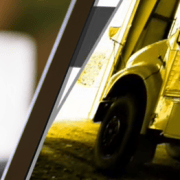3 Top Tips for Improving Incident Management
A distinction you often hear about in trucking is between accidents and incidents. The distinction is important because prevention and resolution are managed differently for each, and it’s important to learn how to keep associated costs under control. We’re here to help with these 3 tips for improving incident management.
An accident involves a truck colliding with and damaging at least one other vehicle or a person while in transit, and/or involves a truck getting damaged in a crash, even if it avoids colliding with another vehicle or a person. Accidents may involve loss of property and/or loss of life.
An incident, on the other hand, involves a truck damaging property — for example, when a driver backs into a stationary object, such as a wall, post, or parked car.
Though accidents typically cause more damage and result in more financial and human costs, incidents are very common. Because of their frequency, incidents are a cause of a great deal of money being paid out every year by trucking companies.
Financial losses for each incident include:
- Damage to your own property
- Damage to someone else’s property
You have to pay for both sets of property to be repaired and/or replaced. Even a minor backing incident can cost thousands of dollars.
How do you manage this risk
3 Top Tips for Improving Incident Management
Tip 1: Improve prevention with targeted training.
Incidents should not be overlooked in your training strategy because they can’t be overlooked in your budget. It’s a simple fact.
The key to managing and preventing incidents is making sure you are getting all drivers trained, trained, and trained again on topics specific to their driving situations. A general “Drive more safely!” reminder and a reprimand are not going to cut it.
See how Infinit-I Workforce Solutions makes it possible to train 100% of your drivers, every time.
Train on backing and turning
Don’t wait for violations to pile up. Protect your property and that of others and offer regularly scheduled, repeated training for backing and turning to prevent embarrassing tail swing incidents and backing into stationary objects. Offer this even more frequently for drivers who drive in urban and densely populated suburban areas with tight spaces and more cars to deal with.
For example, a crucial safety step is to stop, get out, look all around the vehicle before backing. It’s easy to stay in the rig in the interest of time and convenience. But backing and turning the right way helps manage costs and saves you and your drivers a lot of frustration in the long run.
Train on parking specific to routes
Another common incident is parking illegally. The how’s, where’s, and whys of rig parking vary from location to location across the country. This has to do with factors like topography, architecture, laws, and regulations. Part of knowing how and where you can park also includes when and where you can idle legally. It’s not always self-evident or clear what to do.
Train on parking regulations specific to truckers’ routes. For example, if you have drivers who load or unload at shipping ports, they’re encountering risk, because ports have special regulations about where trucks can be. Even an excellent driver might easily break a regulation at a port, which can easily result in a fine you didn’t see coming.
You may need to create custom training content that targets parking laws along specific routes.
Tip 2: Train repeatedly to build habits.
Incidents happen in the heat of the moment. They often come as an — let’s say — “unwelcome surprise,” as a driver is concentrating on something else.
When you’ve got drivers maneuvering dozens of large rigs in an infinite variety of situations, from country roads to downtown city streets, loading, unloading, navigating, and trying to maneuver into spaces, there are innumerable ways for incidents to occur, and hundreds of safety details it’s all too easy to forget.
And so many things are vying for your drivers’ attention at those crucial moments. Drivers may be in an unfamiliar city, following new instructions from their drop-off point, fatigued from coming to the end of a shift, or even feeling impatient because they’re hyped up on coffee!
Training should be done frequently enough so that common behaviors that prevent incidents become ingrained habits — automatic reaction — not something drivers have to drop everything and clear their minds to think about.
And when incidents do occur, apply the same strategy to remediation. Don’t hesitate to jump in there. Hold your drivers accountable for excellence. Bump up specific driver training schedules with topics that show you’ve done your due diligence to correct unwanted behavior.
3 – Pay attention to insurance coverage.
If you have an insurance company, it will get involved in these incidents and help mediate between you and the claimant. Or your company might be self-insured. Not all insurance coverage is created equal when it comes to managing incidents. Whatever your coverage may be, you’re only covered up to a certain point. Keep that point in mind. When you are able to reduce the frequency and severity of incidents, you are paying out less to claimants, whether directly or through your insurance company.
If you’re insured with an insurance company, each time a driver causes an incident, there’s a claim on your insurance, and a number of claims over time increases risk, which causes your premiums to go up. A lower frequency of incidents may also allow you to purchase a more affordable level of coverage.
However, you’re insured, improving incident management will affect the cost of insurance and/or your loss of revenue due to payouts.
As you start your journey to better incident management, look for preventative training topics in the Infinit-I Workforce Solutions catalog. We carry content to help you carry out a better safety plan. When you need custom content, we can deliver that through our system as well.
Infinit-I Workforce Solutions exists to help trucking companies live long and healthy lives by putting safety first. Watch this short video to see how we can simplify and empower your training process like never before!











